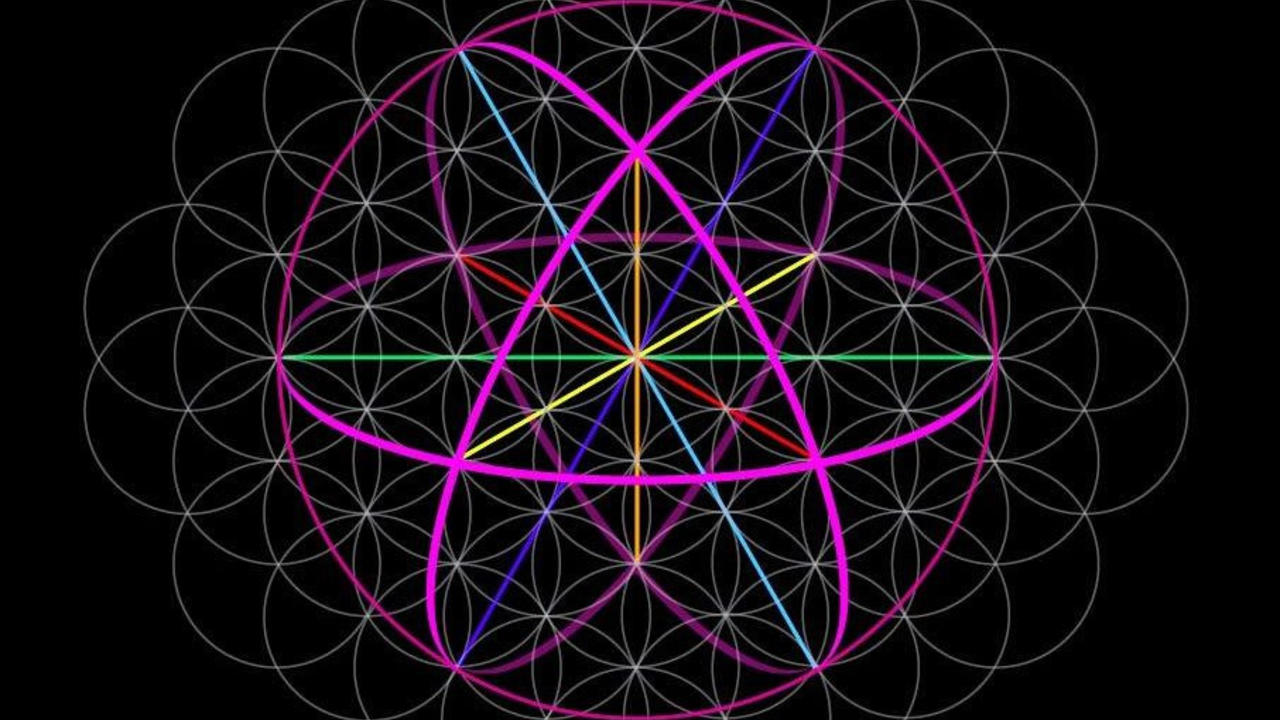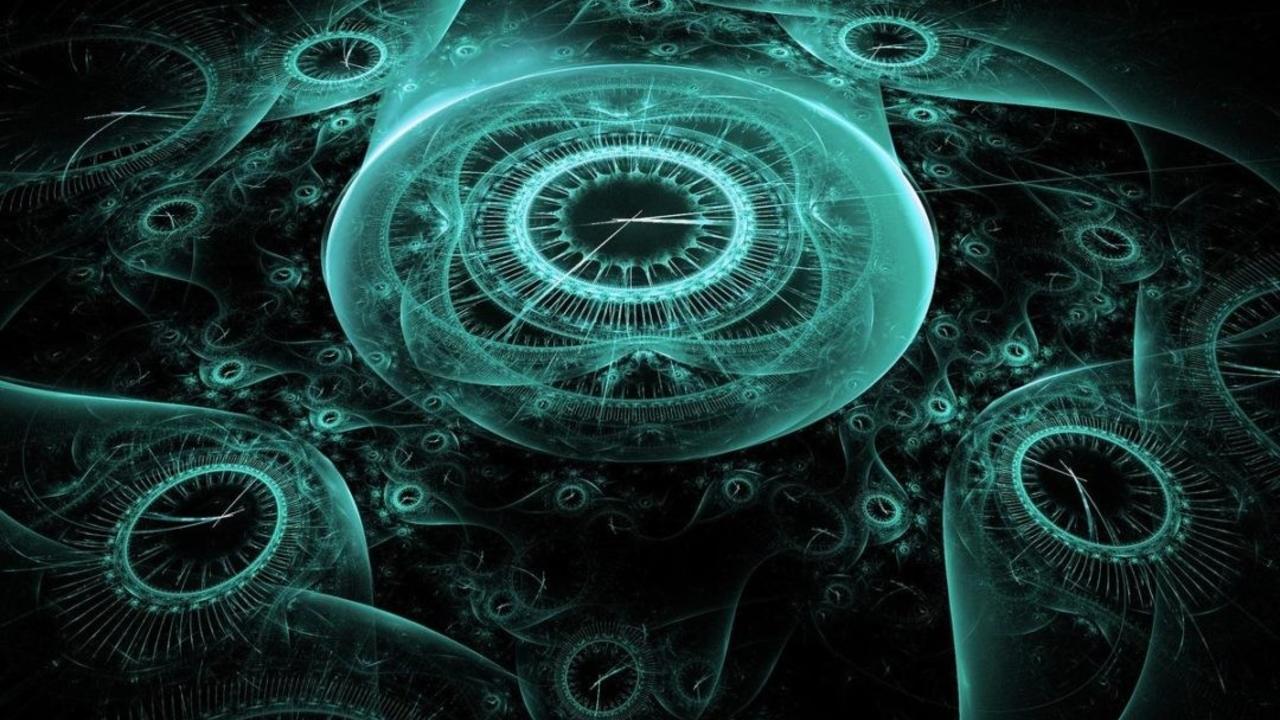Science News
& Faculty Articles
Protons in Life

by
Image by Marshall Lefferts http://cosmometry.com/. See RSF in Perspective below for more info on this image.
Just recently, new experimental data on the charge radius of the proton was published in Science, confirming Nassim Haramein’s 2012 prediction based on his Holofractal Universe Theory as being exact. Previously, Nobel Laureate Hideki Yukawa and others gave hints the charge radius could be smaller than the current paradigm standard estimated. For us it is very important that the prediction is a result of a much broader theoretical perspective based on Quantized Gravity, Spin Dynamics and Unified Physics. Now, why could this be important for your everyday life?
Haramein’s Generalized Holographic Approach successfully predicts many more observed parameters (micro- and macrocosmic) and allows biological processes to be integrated as well. Life must no longer happen in undefined physical realms. We...
The Morphogenic Field is Real and These Scientists Show How to Use It to Understand Nature

by
In a new study, Chris Jeynes and Michael Parker pose the question: How does nature produce such stunning symmetry and order in many systems observed across enormous scales? Under the microscope, a snowflake shows intricate patterning and remarkable symmetry, and in a telescope the same is observed for spiral galaxies up to half a million light years across.
Both of these systems are made of innumerable subunits (be they water molecules or stars and planets) which should behave completely oblivious to the overall configuration of the conglomerate. That is to say, the behavior of these systems at the scales that matter—the fundamental units of which they are composed— should be completely random aside from some formative causation arising from intermolecular or inter-gravitational interactions, which are not long-range.
The question then becomes what is the causative ordering parameters that results in...
Inside the Mysterious Electron

by
As surprising as it may sound, no one really knows what an electron is. To answer the question “What is an electron?”, you would think the first step would be to observe it. However, that is easier said than done. So, while we can’t observe an electron, we can observe its behavior—more specifically its energy.
Full Article by RSF Research Scientist Dr. Amira Val Baker in Popular Electronics: Read more
Learn more in our free Unified Science Course
What is an electron?

by Dr. Amira Val Baker, Resonance Science Foundation Astrophysicist
Everyone knows what an electron is – right? Surprisingly the answer to that is no – no one really knows what it is.
If you ask any high school student what an electron is, they will most probably tell you that it is a subatomic particle with negative charge and acts as the primary carrier of electricity. This answer is indeed correct – however it does not reveal the true nature of its reality.
This fundamental question has been the driving force for much of modern physics – and eventually led to the development of quantum field theory – yet we are not any closer to finding an answer.

To answer this question, you would think the first step would be to observe it. However, that is easier said than done. Electrons are simply too small for us to observe – the smallest thing we can observe is an atom and even that is not with a traditional microscope. In fact, we use electrons to...
Nature’s Effective Way of Conducting Electrons

by Dr.
Circulation of electrons is essential in electronics and also for living organisms. While in our computers, we use semiconductor made mainly of silicon crystal, Nature has found a more effective way: proteins. Protein structures facilitate long-range electron-transfer. Scientists have shown that structural features of proteins have elements that facilitate electronic conductivity.
This phenomenon is largely due to the chiral-induced spin selectivity (CISS). It causes in particular the reduction of the elastic backscattering in electron-transfer through chiral molecules. In fact, electron transmission shows that ordered films of chiral organic molecules act as electron spin filters. The CISS effect gives us important insight for spin-selective processes in biology and allows the use of chiral molecules in spintronics applications.
The electron-transfer process allows for the transfer of energy and information...
Is Spacetime A Quantum Code?

by Dr.
In 2014, physicists found evidence of a deep connection between quantum error correction and the nature of space, time and gravity. Generally, gravity is defined as the fabric of space and time but beyond Einstein’s theory, there must be a quantum origin from which the space-time somehow emerges.
The three physicists at the origin of this discovery, Ahmed Almheiri, Xi Dong and Daniel Harlow, suggested that a holographic “emergence” of space-time works just like a quantum error-correcting code. In their paper “Bulk Locality and Quantum Error Correction in AdS/CFT” published in its first version in November 2014, they showed that space-time emerges from this quantum error correction code in an anti-de Sitter (AdS) universes.
The discovery is opening a new way to capture more properties of space-time.

From left: Ahmed Almheiri, Xi Dong and Daniel Harlow originated a powerful new idea...
The Casimir Torque validated experimentally for the first time

by
The Casimir effect, responsible for the attraction of two neutral metallic plates separated 1 micron apart, is one of the most outstanding features of the vacuum influence on the macroscopic world, and has been discussed in former articles. The effect has been measured in a variety of experimental setups, but this is the first time its associated torque has been verified experimentally. The so-called Casimir torque, predicted more than 40 years ago, is a mechanical torque between two optically anisotropic materials, and depends on the electromagnetic fluctuations (EM) of the vacuum -known as vacuum fluctuations- as well as on the dielectric function of the materials, which describes the capacity of an internal charge reorganization property within the material. Optically anisotropic means that the refractive index of the material depends on the polarization and propagation direction of the electromagnetic...
Crossing the Event Horizon with Loop Quantum Gravity

Article by Dr. Olivier Alirol, Resonance Science Foundation Research Scientist
Black Holes are the most powerful objects known in the Universe. And yet their physic remains to be discovered. For example, collapsing matter may not disappear at their center. It could bounce inside and, energy and information that fell into the black hole could emerge from the white hole. Hawking suggested once using these objects as a worldwide power plant. “A mountain-sized black hole would give off X-rays and gamma rays at a rate of about 10 million megawatts, enough to power the world’s electricity supply. It wouldn’t be easy, however, to harness a mini black hole. You couldn’t keep it in a power station, because it would drop through the floor and end up at the center of the Earth.” Black Holes are surprising singularities which are windows onto physics beyond Einstein and there is still no complete answers on how they really work.
One important question is about how...
Inner Clocks and Future Prediction

Article by Dr.
Researchers from University of California – Berkeley found two clocks in our brains with different functions. The paper authored by Assaf Breska and Richard B. Ivry from the Departement of Psychology was published lately in PNAS. There are different locations in the reptilian parts of our brain (the brainstem) where we process present and anticipative time. As well as our sense of orientation in space of the body, our orientation in time is processed by the cerebellum. The anticipatory part is processed in the basal ganglia, meaning the most advanced system of the reptilian brain and the connection to the higher operative systems of the grey matter. One of these basal ganglia is the Thalamus, referred to as “the gate to consciousness” by medical textbooks. It is as well the generator of the brainwave frequencies, hence our conscious activity...
The Elusive Electric Dipole Moment

Article by Dr. Amira Val Baker, Resonance Science Foundation Research Scientist
Precise measurements of the electron dipole moment (EDM) may help solve unanswered questions about our universe.
The standard model of particle physics accurately describes all particle physics measurements made so far in the laboratory. However, although it aims to describe our observable universe, from the very big to the very small, it currently leaves many questions open for debate. One such question is – why is our Universe predominantly ordinary matter and not anti-matter?
Back in 1967, the Russian scientist Andrei Sakharov recognized that a possible reason for this asymmetry could be the occurrence of CP violation – that is the charge (C) and parity (P) combined symmetry is not conserved as expected. Sakharov suggested that matter and anti-matter were present in equal quantities in the early universe and that asymmetry developed with the occurrence of CP violation – most probably...




